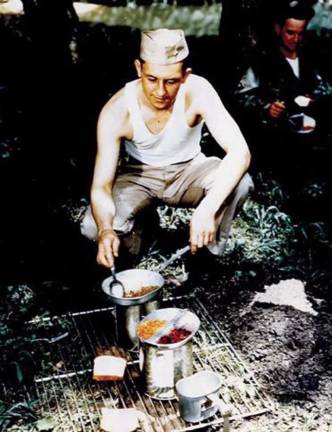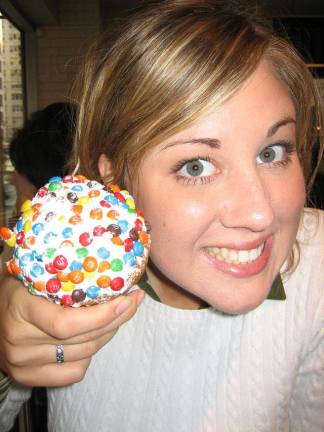A famous Vietnam era poster rightly read, “War is not healthy for children and other living things.” But feeding the fighters in war has produced some tasty treats for our civilian tables and taste buds.
Start with M&Ms. The History Network tells us that after a fight with his father, candy maker Forrest Edward Mars Sr. took off for England where he made his own Mars bars for British soldiers. Late in the 1930s, he noticed that Brits volunteering for the Spanish Civil War packed small sugar-coated chocolate candies into their mess kits. The coating kept the chocolate from melting, a really big deal when summer heat made hash of chocolate sales. Back in the States, Mars invited fellow candy maker Bruce Murrie to join him in a new business venture: Mars-plus-Murrie M&Ms. During WWII, they sold exclusively to the U.S. military. By the time the war was over and GIs returned home, they were happily hooked.
Moving on to the civilian market, Mars introduced the now-familiar M&Ms brown bag. All was going smoothly until a Russian study linked FD&C Red No. 2, then the most widely used commercial food dye in America, to cancer and fetal death. Although M&Ms had never used that coloring, Mars temporarily canceled the color from his candy, eventually bringing it back with the now-safe and shiny Red No. 40.
Meanwhile, as Atlas Obscura editor Diana Hubbell notes, M&Ms were not the only food to get their start courtesy of the U.S. Army. It was actually launched in 1937 but it was not until a drunken naming party tossed by company executives that it got its name, SPAM. Housewives were still a little dubious about a meat product that required no refrigeration. But during WWII, the military bought up 150 million pounds of the new canned luncheon meat SPAM, ultimately integrating it into the local cuisine in places American warriors had put down their boots, from the Philippines to Okinawa, Guam to South Korea. None other than Nikita Khrushchev, the former premier of the Soviet Union credits SPAM with feeding the country’s Army in World War II and said without it they could not have been fed. Today, there is a vSPAM festival in Waikiki, Hawaii and a SPAM Museum in Minnesota. And of course Monty Python’s Flying Circus had characters breaking out into a song about “wonderful SPAM” which got a second life in 2004 in the Broadway comedy Spamalot.
The Army was also big on the dehydrated cheese powder USDA developed in the early 1940s. After the war some savvy bureaucrat decided to sell the piles of leftovers to Frito-Lay whose cooks fried it up into–you guessed it–Cheetos.
If just thinking about those salted crisps makes you thirsty, pour yourself a cup of instant coffee. Japanese-America chemist Satori Kato came up with water-soluble coffee powder way back in 1901; by WWII the Army was snapping up 37,000 pounds a day, presumably to keep their men well caffeinated in front line fox holes.
Finally, say a silent thank-you to French physician/physicist Jacques-Arsene d’Arsonval who invented freeze-drying in 1906 to preserve blood serum during World War I. Years later, the Natick Soldier Systems Center in Massachusetts used his technique to create freeze-dried fruit, a shelf-stable food for NASA astronauts who also loved their M&Ms which went aloft on NASA’s first space shuttle, Columbia, in 1981. Thirty years later, Mars made special candy for the final launch of the Atlantis shuttle, decorated with images of the ship, the phrase “3, 2, 1...Lift Off!” and the date: July 8, 2011.
Today, you can enjoy these candies, crisps, coffees, and canned meats here on earth, safe at home, with no bombs bursting in mid-air.

